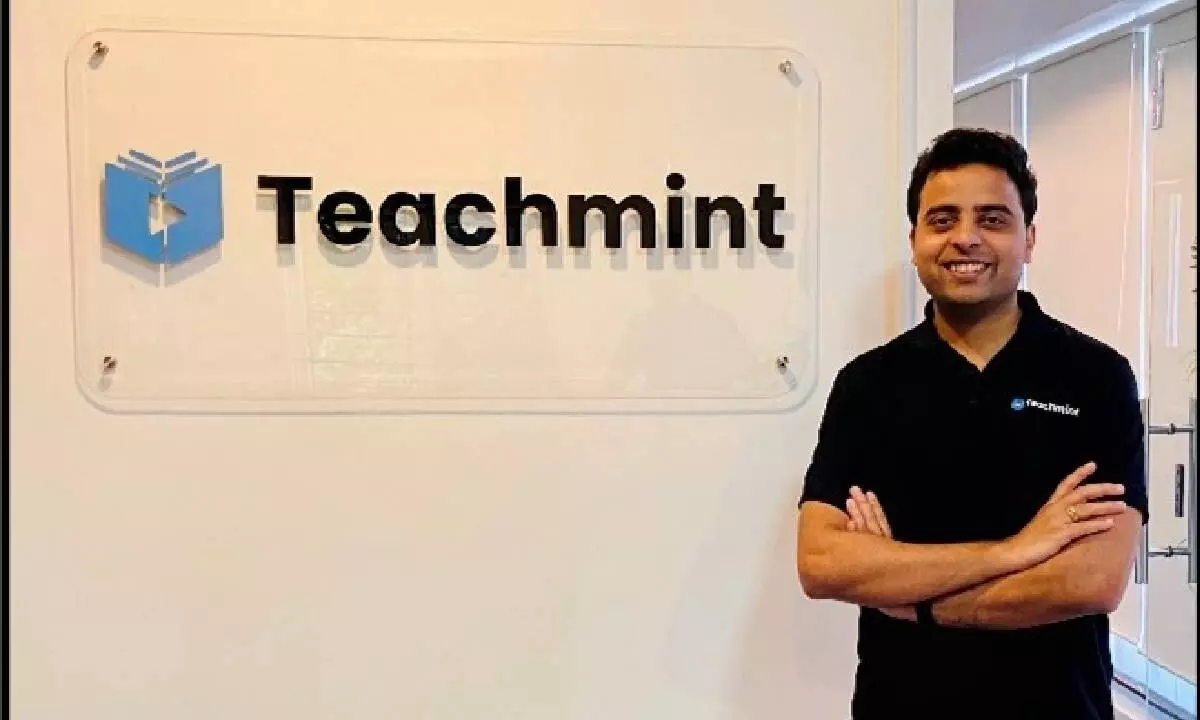Teachmint: The all-in-one platform streamlining schools for the future
By simplifying administrative tasks, fostering open communication, and optimising learning outcomes, Teachmint creates a dynamic environment where both students and teachers can thrive
image for illustrative purpose

Teachmint is a leading provider of educational technology (edtech) solutions, offering a comprehensive platform designed to empower schools and educators in the 21st century. Their innovative approach streamlines administrative tasks, fosters communication, and optimises learning outcomes, creating a dynamic environment for students and teachers alike. In an interview with Bizz Buzz, Rahul Singh, Associate Vice President (Product Management) at Teachmint, delves into the company's mission and the future of education.
How does Teachmint streamline administrative tasks for school administrators and staff?
Teachmint’s Integrated School Platform (ISP) is a comprehensive SaaS solution tailored for 21st-century schools. By integrating cutting-edge technology, Teachmint’s ISP has been simplifying administrative tasks, enhancing communication among stakeholders, and optimizing student learning outcomes in today's educational landscape.
With a unified dashboard and dedicated apps, Teachmint ISP fosters real-time communication between school leaders, staff, students, and parents, ensuring transparency and collaboration at every level. The ISP facilitates a smooth admission process and centralizes student data with the Student Information System for efficient administrative workflows. Additionally, its inbuilt features, such as HRMS and automated payroll, enhance staff efficiency, while POS integration and QR codes simplify fee management and ensure financial operations are streamlined and compliant.
How do leading educational technology platforms address concerns regarding data security and privacy for both educators and students while utilizing their services?
In the rapidly evolving realm of online education, the commitment to data privacy is non-negotiable. As we embrace the opportunities offered by virtual learning environments, it is imperative that our pursuit of innovation does not overshadow the fundamental right to privacy. In the digital domain of education, security is not merely a feature; it is the cornerstone upon which the future of learning stands.
Virtual learning spaces should offer more than mere convenience; they should serve as sanctuaries where learners feel comfortable expressing themselves and actively participating in the educational process. This entails developing platforms that emphasize privacy features, such as granting users control over their data, clearly communicating privacy policies, and providing mechanisms for users to opt-in or opt-out of certain data-sharing practices. Furthermore, transparency is paramount. Educators, students, and parents should have a comprehensive understanding of what data is being collected, how it will be utilized, and the security measures in place. This transparency fosters trust and cultivates a positive online learning experience for all parties involved.
What challenges do educators face in integrating technology effectively into their teaching methods, and how are edtech companies addressing these challenges?
Educators often encounter hurdles when integrating technology into their teaching methods, including limited access to infrastructure, insufficient training, high costs, the need for pedagogical integration, and digital literacy gaps. We work with educators by offering user-friendly tools, providing professional development opportunities, creating affordable solutions, enabling customization and personalization, and incorporating data analytics and assessment features. We empower educators and schools with, state-of-the-art plug-and-play live class solutions.
How do edtech platforms address the digital divide and ensure equitable access to education for all students?
In addressing the digital divide in education, several key strategies have emerged, presenting promising avenues for equitable access to digital resources. These include significant investment in digital infrastructure to expand internet connectivity, ensuring affordable access to devices through collaborations between governments, schools, and edtech players, and prioritizing digital literacy training for students, teachers, and parents. Engaging with technology companies for discounted software licenses and developing mobile learning solutions leveraging smartphones' widespread availability are some of the impactful approaches. Additionally, efforts to localize digital content, foster public-private partnerships, explore innovative funding models, and enact inclusive policy initiatives underscore the comprehensive approach needed to bridge this divide sustainably. These initiatives emphasize the crucial role of collaboration, innovation, and long-term planning in ensuring all learners have equal opportunities for success in the digital era.
What are the emerging trends to watch for in the edtech sector in 2024?
In 2024, technology's integration into classrooms will continue to transform education, offering VR and AR, and gamification elements are revolutionizing teaching methods. Remote and hybrid learning solutions are bridging traditional and digital education, while prioritizing social and emotional learning equips students with crucial life skills. Microlearning modules and teacher upskilling initiatives further enhance educational outcomes, ensuring both learners and educators are prepared for a dynamic future. As technology evolves, it continues to shape the educational landscape, empowering individuals to thrive in a rapidly changing world.

